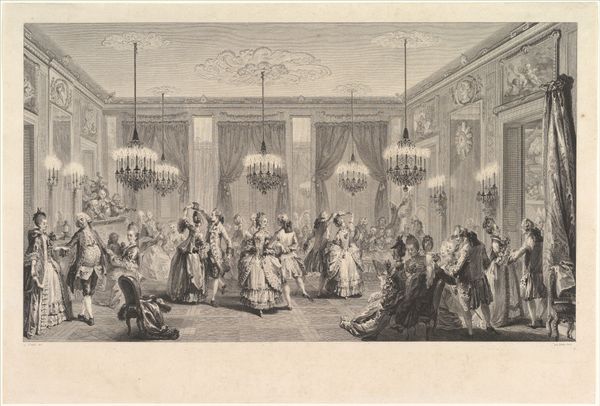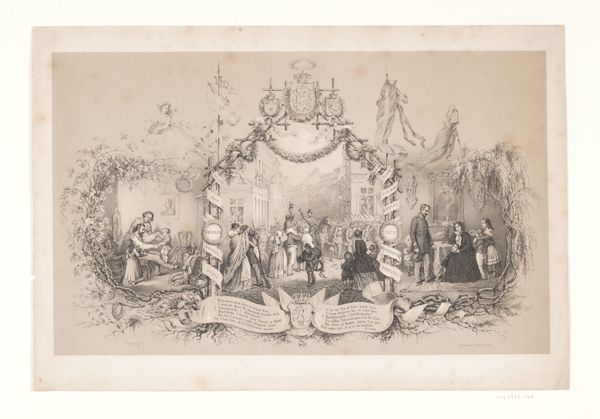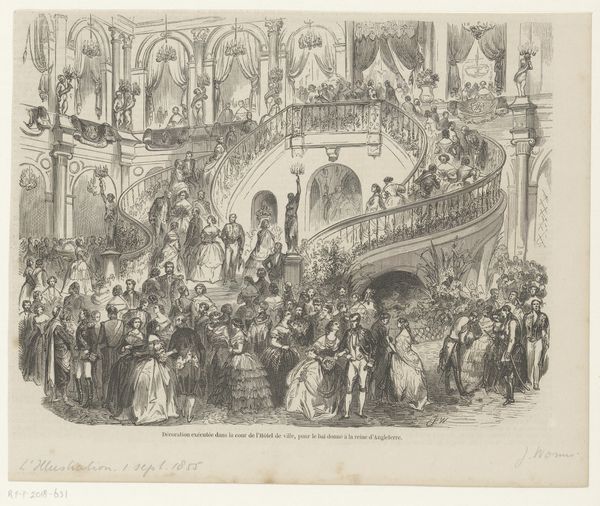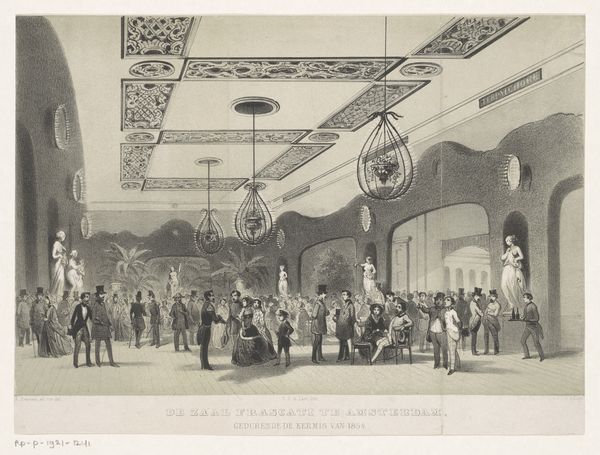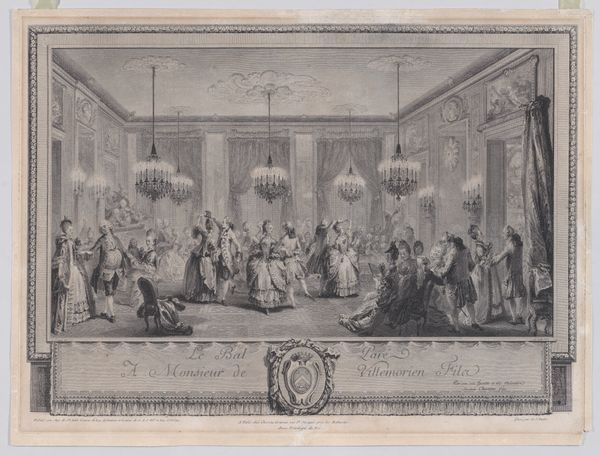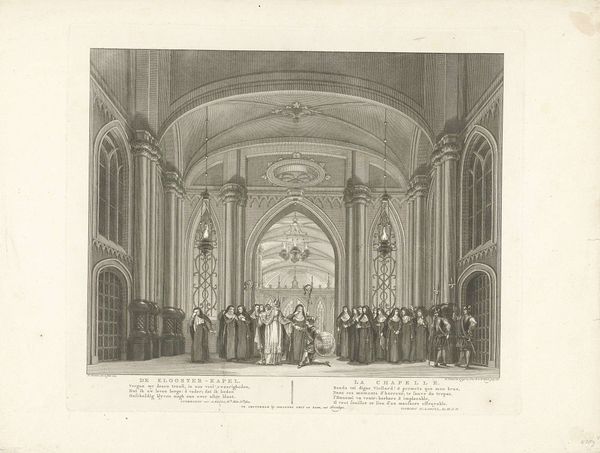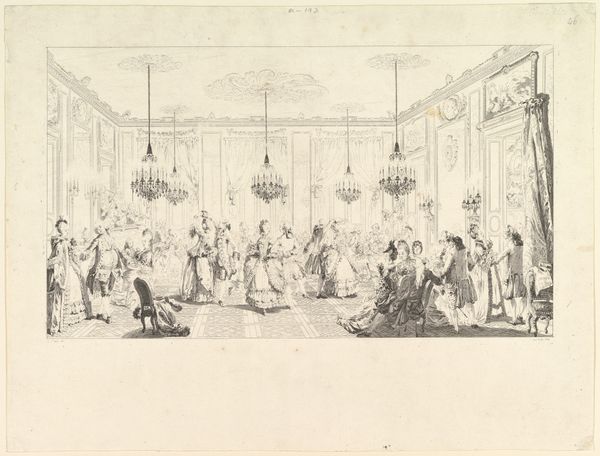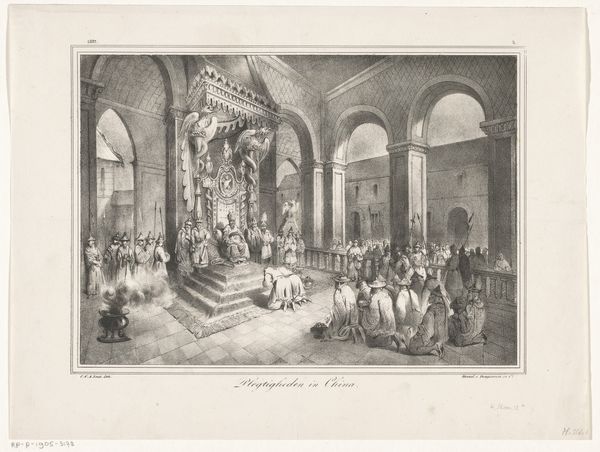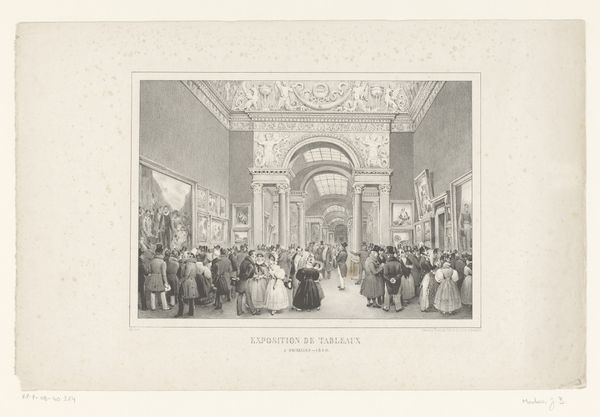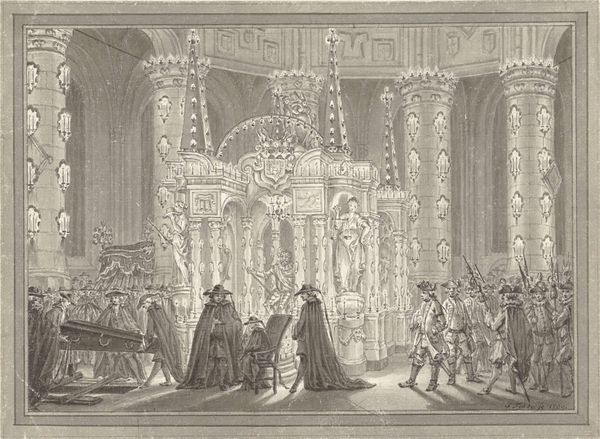
print, engraving
#
dutch-golden-age
# print
#
old engraving style
#
personal sketchbook
#
romanticism
#
cityscape
#
genre-painting
#
engraving
Dimensions: height 155 mm, width 250 mm
Copyright: Rijks Museum: Open Domain
Editor: This is "Interieur van Frascati op 10 september 1845," a print made in 1845 by Hendrik Wilhelmus Last, depicting a scene inside the Frascati room in Amsterdam. I find the arrangement of people around the tables creating such a bustling atmosphere, what jumps out to you? Curator: Well, I see a careful orchestration of social memory, carefully placed signifiers in this space. Look at the statues, evoking classical antiquity, mingling with depictions of contemporary bourgeois life. Editor: Contemporary? Curator: Precisely. They present themselves amidst these emblems of timeless culture, thereby crafting a narrative around their social status. It seems calculated. Wouldn’t you agree? Editor: That’s really interesting. It almost feels performative. The figures positioned beside them as though aware of their setting within a grand historical narrative. What is the relationship between the internal architectural setting, and its role as backdrop, a means for constructing identity through this print? Curator: Yes! Frascati itself held significance. It was a known public place. The artist leverages our preconceived notions regarding this venue, infusing an already familiar backdrop with intended weight through both the presence and positioning of each detail within his composition. How do the draped decorations contribute, do you think? Editor: The way they frame the statues creates an almost theatrical stage-like presentation, highlighting certain elements to convey their significance. Curator: Exactly. This composition isn't merely a depiction, but an active shaping of social standing, isn't it? We interpret social status through constructed memories presented visually. Editor: I never thought about a cityscape print communicating a status claim that way! It's fascinating to see how historical settings get woven into identity.
Comments
No comments
Be the first to comment and join the conversation on the ultimate creative platform.

